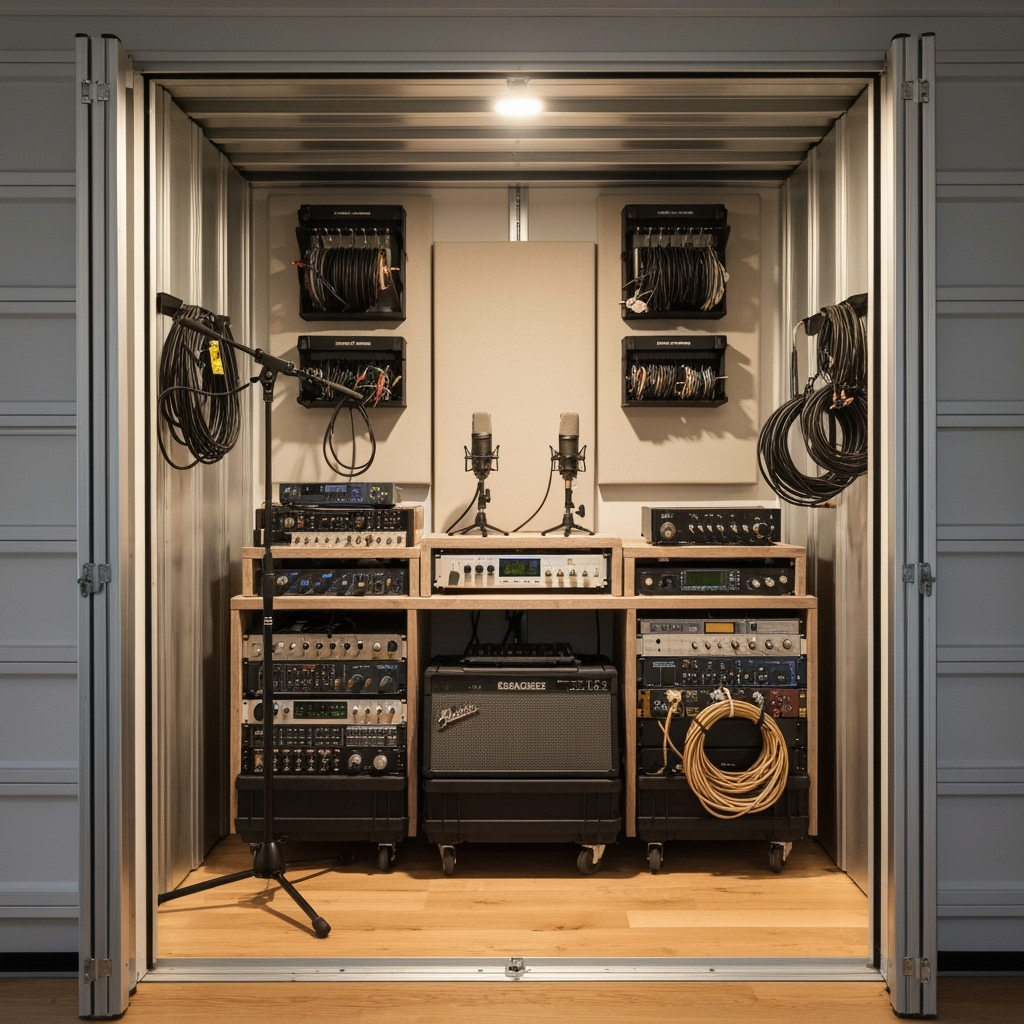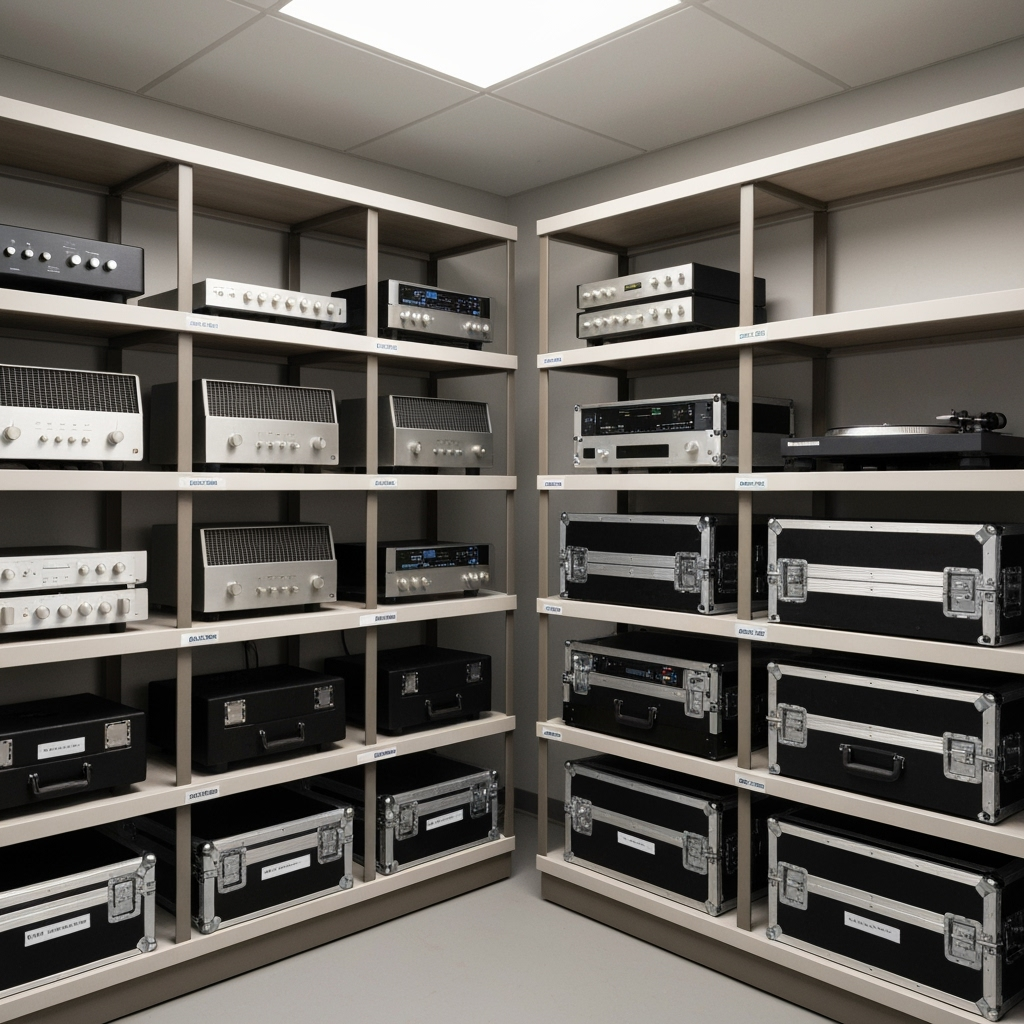The Rise of Home Recording Studios and the Need for Proper Storage
As podcasting, voice-over work, and home music production continue to grow, more professionals are investing in high-quality recording equipment. While these tools are essential for creating professional content, properly storing and protecting this sensitive equipment is crucial for maintaining its quality and longevity.

Why Climate-Controlled Storage Matters for Audio Equipment
Professional audio equipment is particularly sensitive to environmental conditions. Temperature fluctuations and humidity can significantly impact the performance and lifespan of your gear. Climate-controlled storage provides the stable environment necessary to protect your investment.
Key Environmental Factors to Consider
- Temperature stability (ideal range: 65-75°F)
- Humidity control (recommended: 45-50%)
- Protection from dust and debris
- Security features for valuable equipment
Essential Storage Solutions for Different Types of Equipment

Microphones and Sensitive Electronics
Condenser microphones and other sensitive electronics require special attention:
- Use dehumidifier packets in storage cases
- Store microphones upright to protect the diaphragm
- Keep original packaging for additional protection
- Use shock-mount cases for transportation
Audio Interfaces and Preamps
Protect your digital equipment with these strategies:
- Store in anti-static bags
- Use foam-lined cases
- Keep away from magnetic fields
- Maintain proper ventilation even in storage
Cable Management and Organization
Proper cable storage not only extends the life of your cables but also makes setup and breakdown more efficient:
- Use velcro ties instead of rubber bands
- Implement a color-coding system
- Store cables coiled in their natural direction
- Keep clear labels for quick identification
Storage Unit Setup and Organization
Creating Zones for Different Equipment Types
Organize your storage unit with these dedicated areas:
- Microphone and sensitive equipment zone
- Digital equipment and interface section
- Cable management area
- Accessories and spare parts section
Maintenance and Regular Check-ups
Establish a routine maintenance schedule:
- Monthly equipment inspection
- Quarterly deep cleaning
- Regular humidity monitoring
- Temperature log maintenance
Insurance and Documentation
Protect your investment beyond physical storage:
- Maintain detailed inventory lists
- Keep serial numbers recorded
- Document equipment condition with photos
- Update insurance coverage regularly
Preparing for Long-Term Storage
When storing equipment for extended periods:
- Clean all equipment thoroughly before storage
- Remove batteries from devices
- Update firmware before storage
- Create detailed reconnection documentation
Conclusion
Investing in proper storage solutions for your home recording studio equipment is as important as the equipment itself. Climate-controlled storage units offer the perfect environment to protect your audio gear, ensuring it remains in pristine condition and ready for your next recording session.
Contact Public Storage today to learn more about our climate-controlled storage solutions perfect for your recording equipment. Our experts can help you choose the right size unit and provide additional tips for protecting your valuable audio investment.










Leave a Reply